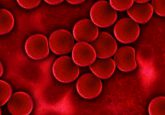Research team uses graphene to produce powerful new biosensor

A team of researchers at Trinity College Dublin’s School of Chemistry (Ireland), Université Grenoble Alpes (France) and Montreal McGill University (Canada), have developed a novel graphene biosensor. The biosensor has shown promise, demonstrating high sensitivity in the detection of cholera toxins and the ability to provide earlier diagnosis of conditions such as cancer and other infectious diseases.
The sensor is based on Surface Plasmon Resonance (SPR), which is an established optical technique used in medical diagnosis. SPR sensors have high sensitivity and specificity and therefore could potentially be used for lab-on-a-chip sensors.
Georg Duesberg (Trinity College Dublin) and his team found that the addition of graphene led to a two-fold increase in the sensor signal. The graphene not only amplified the signal of the SPR sensor, but was also capable of anchoring individual molecules of a specific disease. The sensor was used in the detection of cholera toxins, detecting the toxins in minutes – a lot quicker than current techniques, which may take hours or even days.
“We showed experimentally that simply the addition of graphene led to a clear increase in the sensor signal,” commented Duesberg. “This type of sensing platform offers a large variety for medical diagnostics since it can be adapted to almost any type of disease markers.”
The graphene developed in Duesberg’s laboratory has been shown to be more suited for sensor development than other forms of graphene previously used.
The technique used to grow the graphene is known as chemical vapor deposition, which creates large areas of single layer graphene with minimal defects. The amplification of the sensor signal is due, in part, to the lack of defects and the homogeneity of the graphene surface.
The SPR biosensor developed by the researchers reaches higher levels of sensitivity than the standard ELISA and could be expanded to other diseases, such as cancer, to help meet the enormous need for label free biosensors.
Sources: Research team produces powerful new tool for medical diagnostic applications; Singh M, Holzinger M, Tabrizian M et al. Noncovalently functionalized monolayer graphene for sensitivity enhancement of surface plasmon resonance immunosensors. J. Am. Chem. Soc. 137(8), 2800-2803 (2015).





